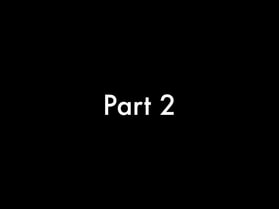|
Parallel keys and scales are keys and scales that share the same root. Understanding this concept is very useful to songwriters and for improvisation.
Many prominent songwriters employ parallel keys and/or parallel scales in their songs. The Beatles frequently used this device, in “While My Guitar Gently Weeps”, the verse is in the key of A minor and the bridge is in the key of A major. In “Penny Lane”, the verse is in B major and the bridge is in B major. Finally in “Norwegian Wood”, the verse is in D major and the bridge is in D minor. You can also use parallel scales to great effect. An example I frequently teach students I,s parallel scales you can you to solo over a traditional dominant blues 12 bar progression. If, for example you're playing blues in the key of G, parallel scale options would be the G minor blues scale, G major blues scale, G mixolydian scale or G dorian scale. Those different scales offer a massive amount of varitey, especially if compounded (mixed together) creatively. Lastly, another interesting trick you can use is to end a song on the parallel I chord of the key. So, if the song is in the key of A major you can end on some form of an A minor chord and if the song is in A minor, you can end on some form of A major.  It's useful to think of relative major and minors as the same notes or chords but with different starting and end points. For example, C major and A minor are reciprocal relatives to each other, both key have the same notes and chords, in this case, all natural notes. A C major scale is C through C natural and an A minor scale is A through A natural, the same notes but with different starting and end points. It's also useful to learn to identify the relative minor key and scale contained within the major key and scale and the reverse. (the major key and scale contained within the minor key and scale) If you play a two octave C major scale for example, the A minor scale is the same notes beginning on the sixth degree of the scale and going past the octave to the thirteenth and if you play an A minor scale in two octaves, the C major scale is the same notes but beginning on the third degree of the A minor scale and going past the octave to the tenth scale degree.  The concept of relative major and minor keys and scales is very useful for understanding composition and improvisation. Relatives share the same notes. Every major key has a relative minor key and every minor key has a relative major key. Every major scale has a relative minor scale and every minor scale has a relative major scale. Here is a simple formula you can use to calculate the relatives: If you're in a major key or scale to find the relative minor simply move a minor 3rd lower (three half steps) which on the guitar or bass is 3 frets lower (to the left) for example, C is at the eight fret of the E string, if you're in the key of C major to find it's relative minor, move three frets lower which is A. A minor is the relative minor of C major, this applies to both the key and the scale. The keys and scales of C major and A minor contain the same notes, in this case, all natural notes. Conversely, if you're in a minor key or scale, to calculate it's relative major, move up a minor 3rd. If you're in A minor, move up three frets and that gives you a C, C major in the relative major to A minor. To reiterate in simple terms: major to relative minor = up a minor 3rd and minor to relative major = down a minor 3rd. Tune in next week for Part 2 of this series... Part 3 in my Guitar Keys series (see part 1 here and part 2 here)
This blog is going to cover the basics of major keys - what is commonly referred to as the "diatonic" major key. ("diatonic" means consistent with the scale the key is based on) In other words, in a diatonic major key, every note of every chord will conform to the notes of the major scale of the same root. For example, the C major scale is the only major scale with no sharps or flats (accidentals) and consequently, all seven diatonic chords in the key of C major consist of only natural notes. Some examples of famous songs in major keys are: "Hey Jude", "Sweet Home Alabama", "Beast of Burden" and "Brown Eyed Girl". Here's a simple process you can use to calculate the seven diatonic chords in all twelve major keys: 1. Pick the key you want to play in. 2. write out the major scale of that key. 3. plug in the following chord quality formula: ("quality" means the suffix of a chord: major, minor, diminished, augmented etc.) major, minor, minor, major, major, minor, diminished Example: C major scale= C - D - E - F - G - A - B diatonic chords in the key of C= C major, D minor, E minor, F major, G major, A minor and B diminished. Part 2 in my Guitar Keys series (see here for part 1)
In addition to the twelve major keys there are also twelve minor keys. Every minor key contains the same notes and chords as what is known as it's "relative major" key. (more on that topic in a future blog) Countless famous songs are written in minor keys: "Thrill is Gone", "I Shot the Sheriff", "Comfortably Numb" and "While my Guitar Gently Weeps". Here's a process you can use to calculate the diatonic chords in all twelve minor keys: 1. Pick the minor key you want to play in. 2. Write out the minor scale of that root. 3. Plug in the following chord quality pattern: minor, diminished, major, minor, minor, major, major Example: A minor scales= A - B - C - D - E - F- G chords in key of A minor= A minor, B diminished, C major, D minor, E minor, F major and G major There is a caveat in minor keys involving the fifth chord which is that they are often played as either major or dominant 7th chords. Example: in key of A minor it's common to play the E minor (the five chord) as either E major or E7. Next week - Major Keys... |
AuthorEric Hankinson Archives
December 2023
Categories
All
|
|
The Chromatic Watch Company
(my other business) |
|


 RSS Feed
RSS Feed

